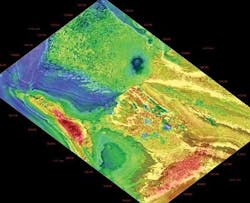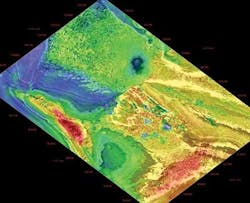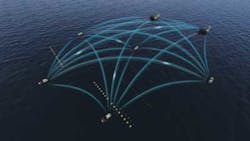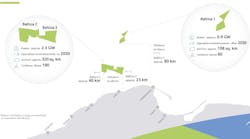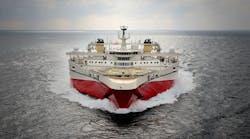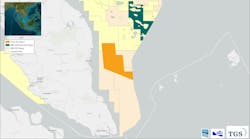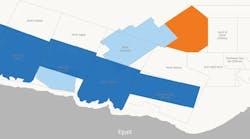Gene Kliewer
Technology Editor, Subsea & Seismic
Two words that encapsulate the recent Society of Exploration Geophysicists annual International Exposition and 84th Annual Meeting in Denver are "innovation" and "integration." Of all the technologies involved in upstream oil and gas, none is more subject to innovations than is the geophysics side. Much of the innovation touted at the event involved integration of systems and programs into packages designed to give a bigger and better understanding of the subsurface to a range of disciplines for an improved life-of-field span. There was also increasing interest in the environmental aspects of offshore exploration.
The emphasis on integration is illustrated by the number of companies from large to small referencing the movement during the exposition. Following are some examples.
IHS Inc. Kingdom 2015 offers integration such as dynamic map updates, geosteering, and 3D geology and fault attributes, enabling geologists, geophysicists, and engineers to work in a shared platform.
The application provides forgeoscience interpretation across geological, geophysical, and engineering interests. For geoscientists, it delivers 3D analysis for fault interpretation and fracture identification, based on a new, patent-pending Illuminator technology. It also offers geosteering to help engineers minimize risk and optimize drilling productivity.
Landmark's GeoGraphix is cited as providing seamless interpretation and seismic and geologic data, with high-resolution 3D seismic attribute generation and seismic multi-attribute rock property prediction. All of this is integrated into one 3D scene. Even Landmark's single-user DecisionSpace G1 offers integrated earth modeling with geophysical interpretation tools such as attribute analysis, velocity modeling, well ties, and depth conversion.
OpendTect 5.0 advances dGB's HorizonCube and sequence stratigraphic interpretation capabilities. Key features, says dGB, include a new interactive HorizonCube tracker workflow for 2D seismic.
Many new OpendTect 5.0 features stem from the dGB-led Sequence Stratigraphic Interpretation System (SSIS) consortium that includes sponsors such as Saudi Aramco, Statoil, OMV, MOL, and Roc Oil.
Other features within OpendTect 5.0 include integration with MATLAB for numerical computation, visualization, and programming; the application of post-stack attributes to pre-stack and multi-component datasets and the creation of multi-attribute outputs to pre-stack or multi-component volumes; access to texture attributes through links to dGB, Austrian-based research institute, Joanneum, and Austrian oil and gas company, OMV Aktiengesellschaft.
Version 5.0 also included enhancements to SynthRock that combines forward modeling, rock physics, and inversion to create and use forward models in qualitative and quantitative seismic interpretation studies.
StructureSolver's StructureSolver 2.0 geophysical interpretation program supplies methods of structural modeling and restoration that integrates structural history, kinematics, and internal strain measures, said the company. It includes linked animations of multiple structures, calculation and display of strain ellipse and strain markers for structural surfaces, and animation of strain throughout time.
StructureSolver also has "one-click" structural restoration that can restore interpreted seismic or geologic sections by restoring slip across faults.
StructureSolver says the program seeks to create paleovertical trajectories in the present day seismic or geologic section that correspond to unbroken vertical traces in the restored section. A hybrid approach is used where length is conserved along the reference horizon, the internal parts of fault blocks are restored using vertical shear, and a constant amount of slip is removed along each fault, equal to the slip of the reference horizon across that fault.
Displaying 1/2 Page 1,2Next>
View Article as Single page
